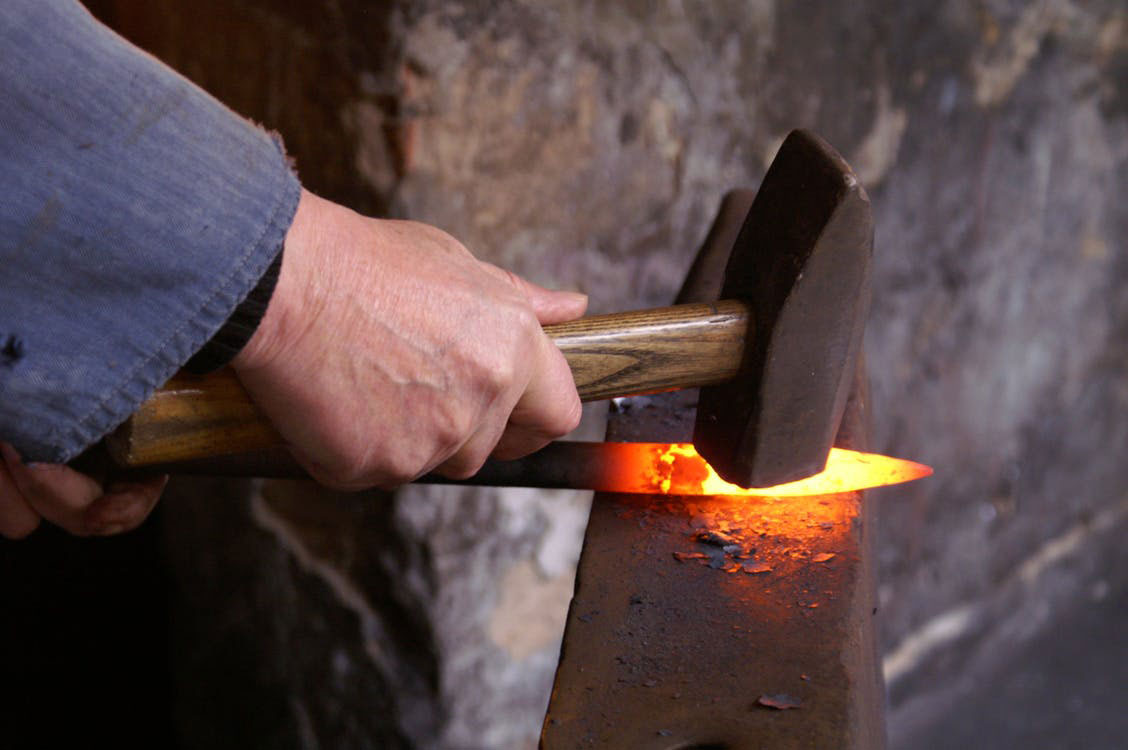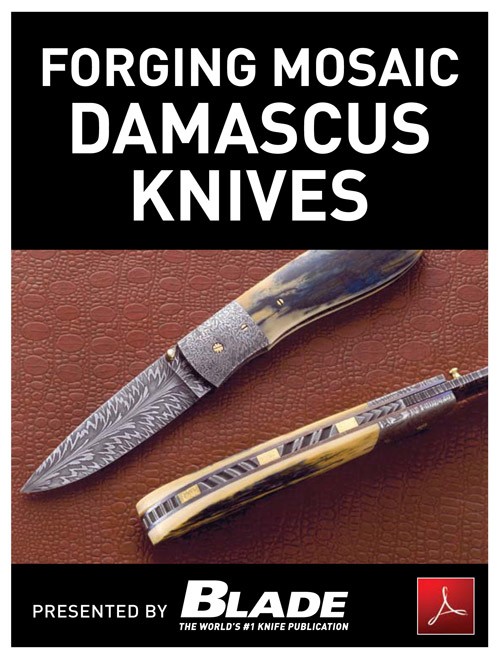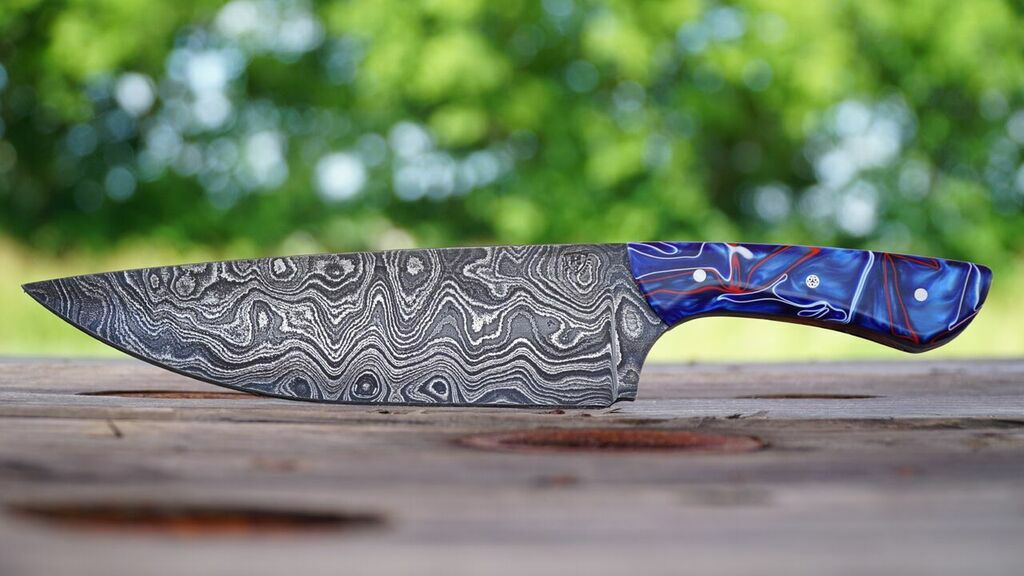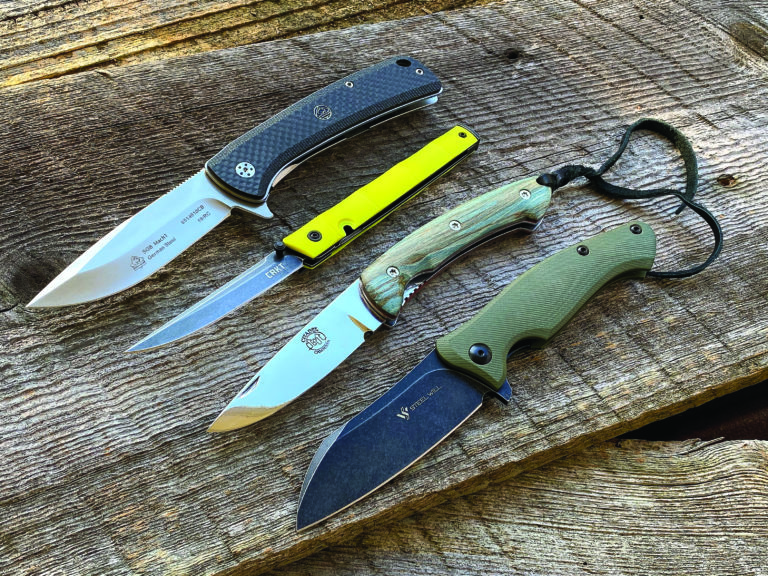
When it comes to EDC folder locks, the linerlock is hard to beat
Few folding knife locks perform as well for everyday carry (EDC) as the linerlock. Constructed properly, the linerlock is easy to open and, especially on a knife that includes a blade opener and a pocket clip, is a snap to carry, deploy, open and close, all with one hand—an EDC hallmark.
CRKT Knives CEO
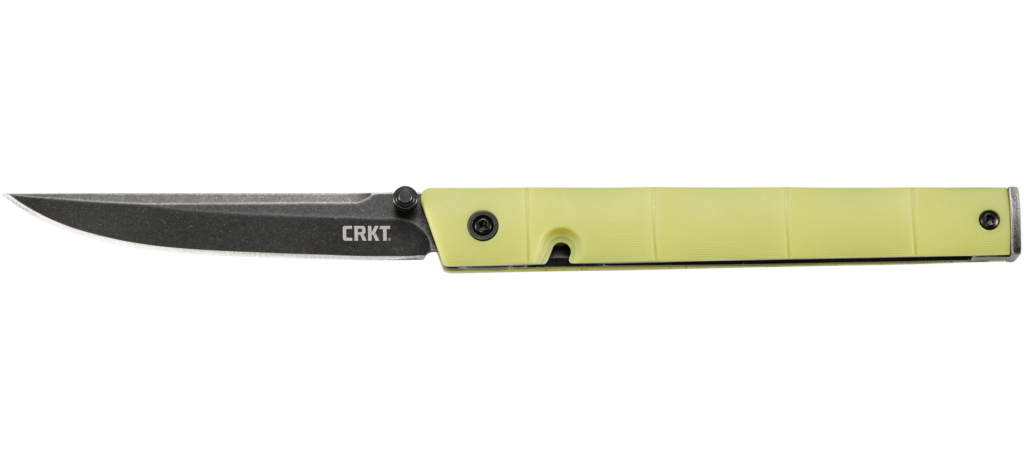
Designed by award-winning knifemaker Richard Rogers, the CEO Bamboo linerlock folder is one of the more slender knives from CRKT. It’s an unobtrusive folder that won’t weigh you down and is ideal for dress suit carry. In fact, it can carry attached to a shirt pocket a la a ballpoint pen. It blends well with the office crowd, as it is a low profile design that will not raise eyebrows.
Just over 3 inches long, the blade is 8Cr13MoV stainless steel for a good balance of edge holding and resharpening ease. The trailing-point blade opens quickly and efficiently via a thumb stud. The pivot’s Ikoma Korth Bearing System (IKBS) enhances smooth blade action. A saber-style primary grind combined with a full-length swedge grind gives the blade a bit of attitude.
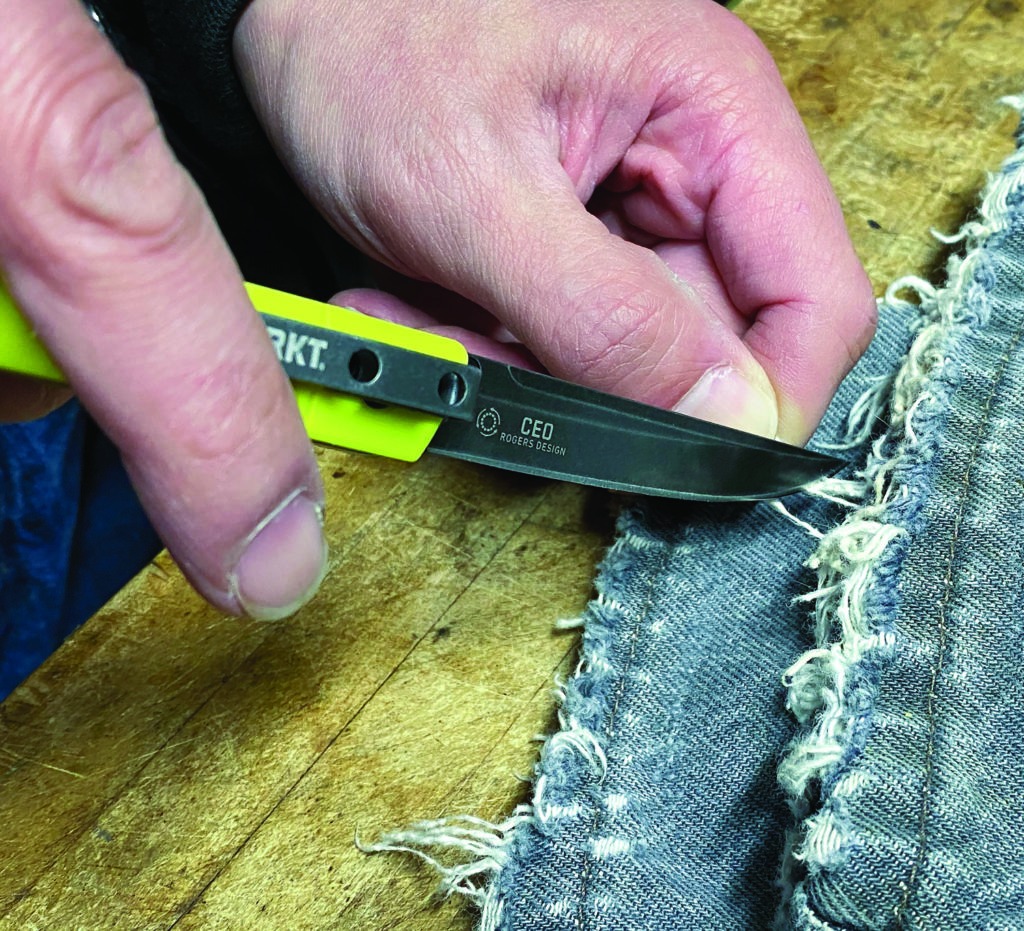
The handle consists of two stainless steel liners and glass-reinforced nylon scales. The scales are molded in a color and shape/texture to mimic bamboo. The handle’s squared off butt resembles the classic doctor’s knife/pillbuster pocketknife pattern. A deep carry, fold-over clip allows the knife to ride low in a pants or shirt pocket, or inside a sport coat breast pocket.
The linerlock engages firmly and secures the blade open with no play. Simply hit the thumb stud and the blade pops open fast to the locked position thanks to the IKBS. Firmly push the edge of the exposed portion of the lock spring, and the blade unlocks and rotates closed as easily as it opens. I like how simple it is to open and close the blade, especially for such a slender folder. Many such folders do not manipulate easily due to their size.
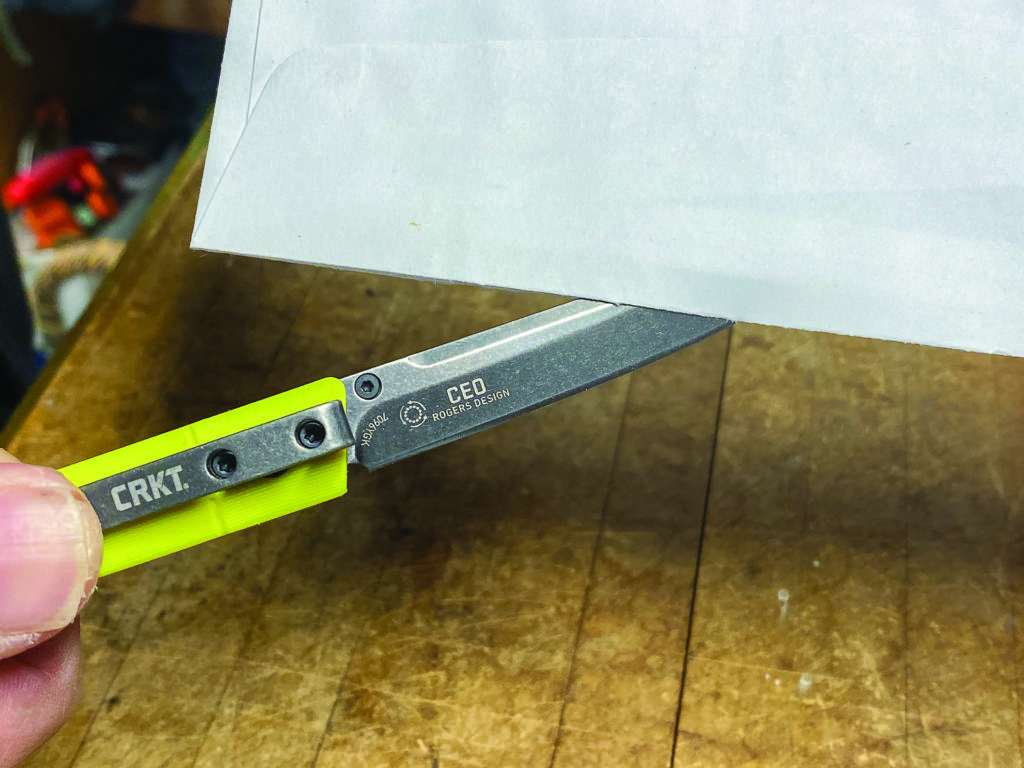
And for a slender folder, the CEO has plenty of bite. The slim blade slits open envelopes and packages effortlessly. I like how it blends in and does its thing with no unnecessary fanfare. The only negative about the CEO is also a positive—the deep carry clip. The fold-over design creates a hot spot when you grip the handle but carries the closed folder deep in the pocket, which is nice. Given that the knife isn’t made for prolonged, heavy duty use, I find the clip to be a good thing. Made in China, the CEO has a manufacturer’s suggested retail price (MSRP) of $54.99. It is a great value.
EXCELLENT SLICER: Citadel Kampot
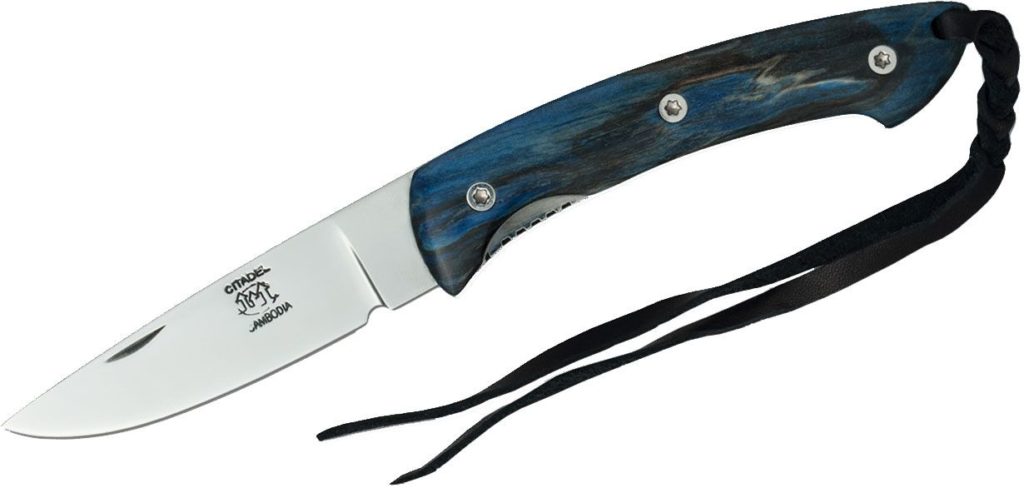
The Citadel Kampot linerlock folder sports a 3-inch drop point blade of Bohler N690 stainless steel. N690 is a mid-grade stainless with great edge holding properties but also is rather easy to resharpen. It is a fine alternative to today’s “super steels.” The ergonomic handle has double stainless steel liners and stabilized blue beech scales. Red liners add a subtle pop of color. The scales are nicely rounded and contoured so the folder rests in your grip comfortably with no hot spots. An integrated guard prevents your hand from sliding onto the blade edge and, together with a bird’s beak butt, keeps your hand on the handle.
The linerlock secures tightly with zero blade play. Five large notches in the end of the liner aid thumb traction in unlocking the blade. The Kampot has a nail nick opener instead of a thumb stud, hole, disc or flipper, so it is the only knife of the test bunch that requires two hands to open, though it does close with one hand like the others. Neither does it have a clip.
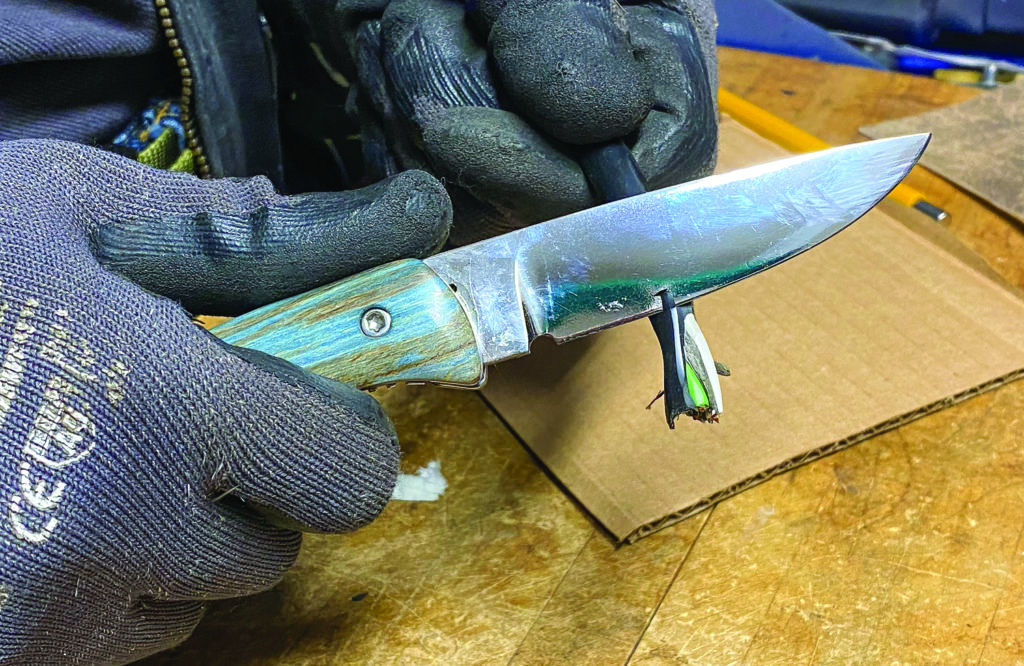
At 4.5 inches closed the Kampot is rather large, which might make it a bit uncomfortable for pocket carry. A braided leather lanyard attached to the handle permits you to fish the folder easily from a pocket. The knife is good looking, with the blade, liners and handle screws exhibiting a high polish.
The flat-ground blade is an excellent slicer. However, out of the box it was not as sharp as I prefer. I gave it a few light strokes on a ceramic rod followed by stropping and that enhanced its bite. The grip is very comfortable and a great alternative to folders with flat handle profiles. It is really nice looking. The beech scales differ slightly in color. The test model has streaks of tan and blue-green as well. It reminds me of how brass and copper patina when exposed to the elements over time and get a blueish green hue. The Kampot is a great alternative if you’re not into the all black and edgy tactical folder look. The blade pivot is not exposed, so the pivot tension is not adjustable. This cleans up the look, though I know some knife guys like to adjust the pivot tension to their own liking.
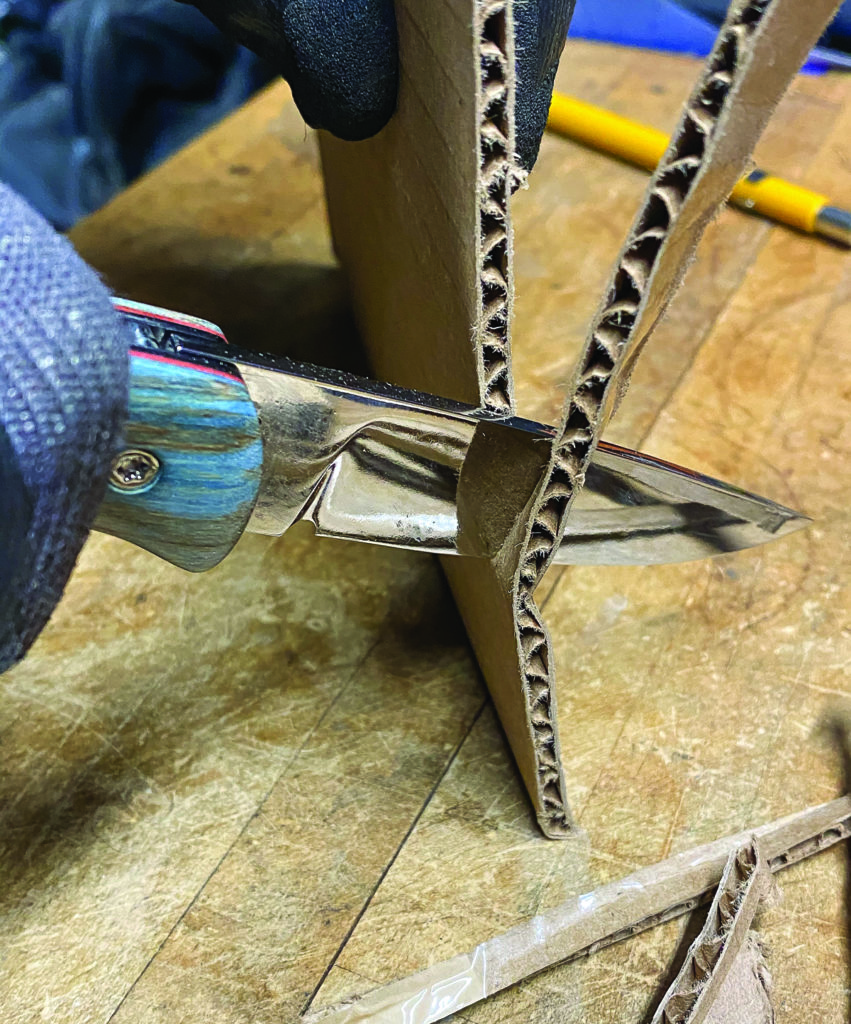
A negative is the knife’s size, though for some that is a good thing. The lack of a clip is compounded by the lack of a belt sheath. The Kampot needs one. For me, the knife is too big to carry in the pocket, so belt carry would be the best option. On the other hand, ready-made belt sheaths are rather easy to find (a good source is Smoky Mountain Knife Works at smkw.com/knife-accessories/sheaths). Made in Cambodia, the Kampot has an MSRP of $205.
CHECKS ’EM ALL: Puma SGB
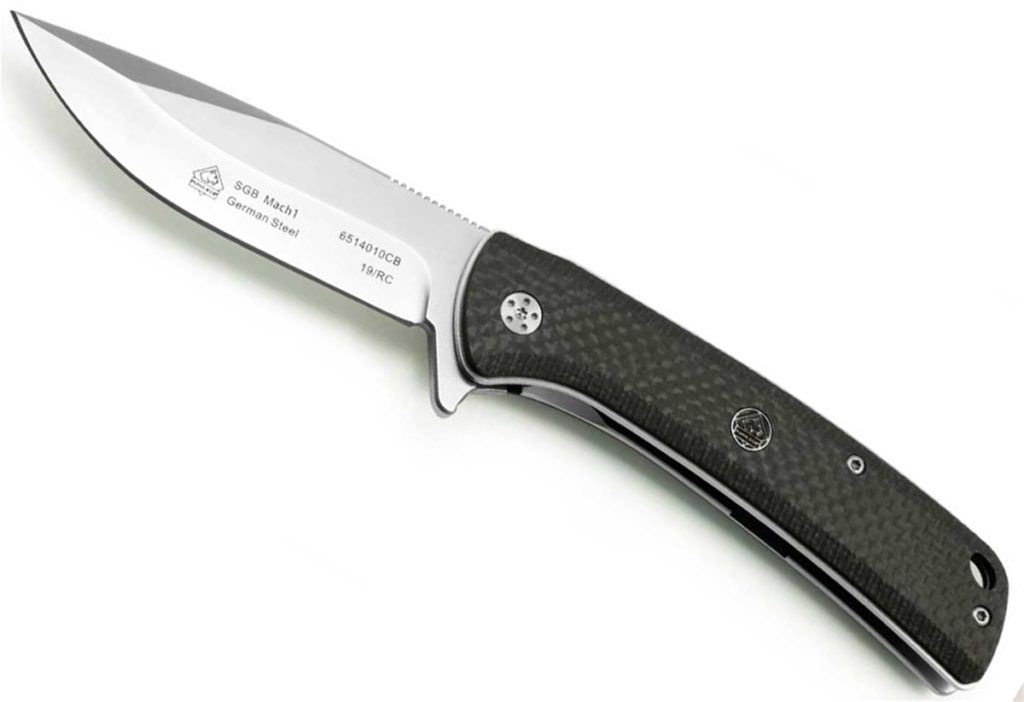
The Mach 1, along with the Sonic, are linerlock flipper folders Puma SGB introduced in 2020. They are identical, sharing the same handle materials/design and blade material. The only difference is the Sonic features a clip point blade and the Mach 1 has a modified drop point. With its hollow ground main bevel and generous, sweeping belly, the 3.6-inch blade in the latter pattern accomplishes a wide variety of cutting tasks. It is a large folder ideal for the ample knife jobs you have, indoors or out.
The German 1.4116 stainless steel holds an edge well and is fairly easy to resharpen. It is a steel found mainly in kitchen knives and is highly stain resistant. It isn’t commonly used in the knife industry, and expect performance to be equivalent to 440A or even 420HC stainless. Its lower overall production costs are passed on to you in the form of a great value.
A flipper tab offers quick and effortless one-hand deployment. The swift, smooth action is aided by a pair of ceramic caged ball bearings in the pivot. The handle features nice carbon fiber scales, giving the Mach 1 a modern, futuristic appearance—it is eye catching the way the light reflects off the strands in the weave pattern. The chamfered edges of the carbon fiber are textured to aid grip retention. A deep carry, fold-over pocket clip totes the closed folder blade tip down in the pocket, deep enough to conceal the knife yet hold it within easy reach.
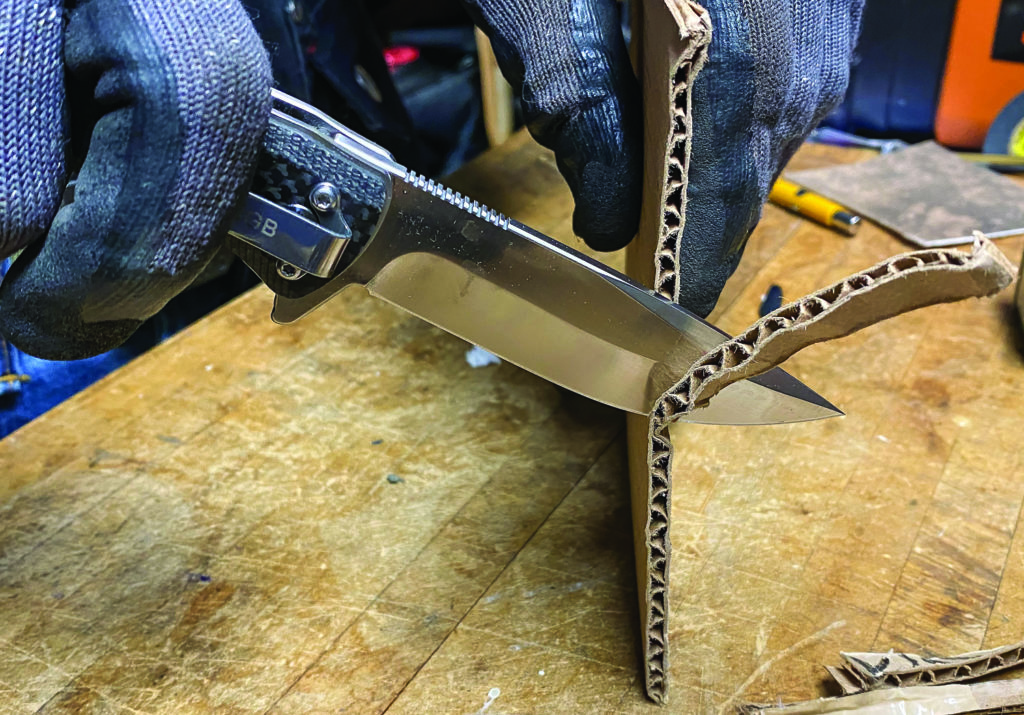
The Mach 1 checks all the boxes: great fit and finish, silky smooth blade action, and super sharp and ready to work right out of the box. The drop point blade adapts to most any task. The edge has a nice bite and easily sinks into the material being cut. As wide as the handle is, you can get a really good grip that instills confidence. The open-frame handle promotes ease of cleaning. Country of origin: China. MSRP: $149.99. For the money, it’s a solid value in features and performance.
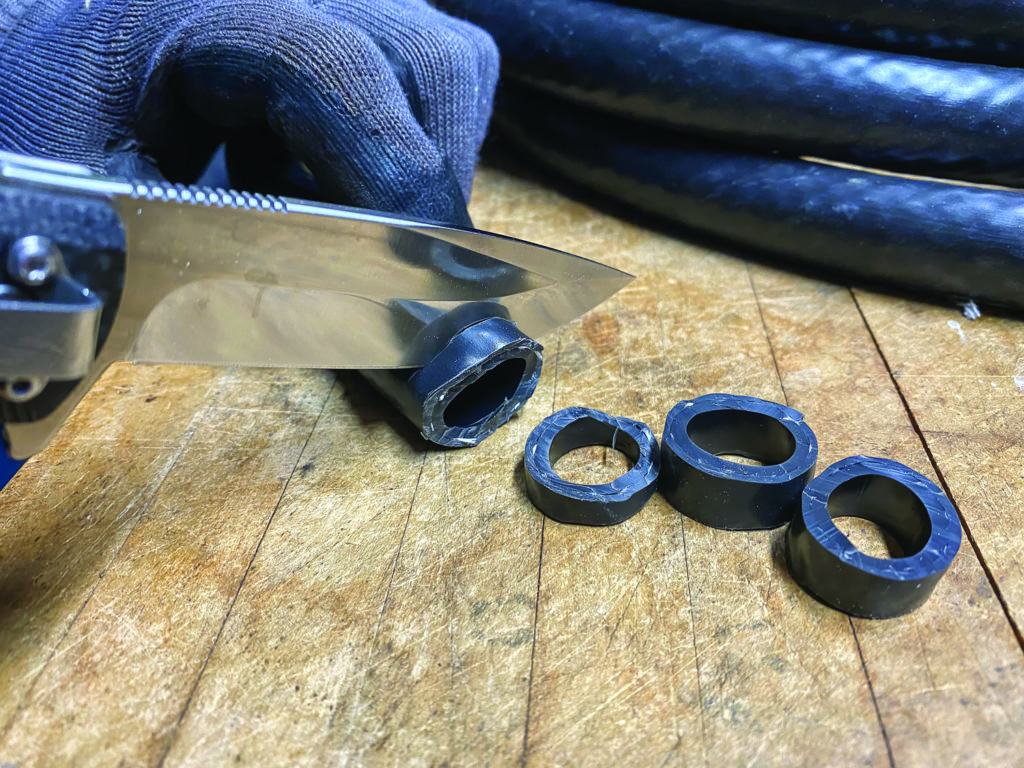
NEW LEVEL of CHIC: F24 Nutcracker from Steel Will Knives
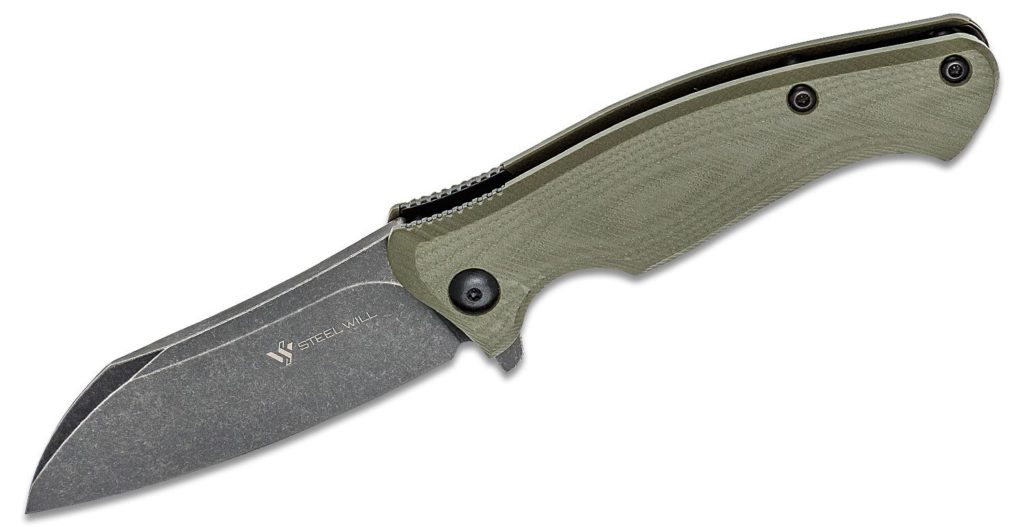
Taking EDC folders to a new level of chic, the F24 Nutcracker from Steel Will Knives features bold styling with a sheepsfoot blade and an ergonomic handle. The 3.4-inch blade is Bohler N690 stainless steel. The flat grind is tailored for both stout utility applications and lateral strength. A flipper is integrated for fast opening and is assisted by ceramic bearings, which promote super-smooth action and rapid deployment.
A large finger recess at the pivot allows you to index the G-10 grip, while the “bird’s beak” butt captures your hand. The G-10 has a light 3-D machining pattern that aids purchase. Traction notches at the thumb rest on the spine supply grip to bear down for power cuts. Dual nested stainless steel liners provide a rigid backbone and the nesting feature reduces overall handle thickness. Two large standoffs add style. A smaller standoff at the rear acts as a tie-off point for a lanyard (not included).
Even the pocket clip is nicely done. It’s sculpted, styled titanium that carries the closed folder blade tip up and is secured via one large screw. The clip’s shape mimics the handle’s curvature, and the overlay adds to aesthetics. It’s great to see a company put extra effort and thought into the clip, which looks better than standard stamped clips. It definitely holds the knife securely in the pocket.
The F24-33 Nutcracker has a black stonewashed blade, black liners, standoffs and clip, and a green G-10 handle. At 4.5 inches closed, the knife is sized just right to handle just about any cutting task. The linerlock secures quite tightly at the lower third of the tang with no blade play. A series of traction notches at the exposed portion of the liner permits the thumb to easily seat and secure itself to unlock the blade.
HOW LINERLOCKS SHOULD LOCK
Many knife nuts in-the-know have certain preferences to where a brand new linerlock knife’s lock spring should hit on the tang when the blade is locked open. Some prefer it to hit in the lower third of the tang, from the linerlock side. Some prefer it to hit in the middle.
One thing to remember about linerlocks is there is a break-in period for the lock. In other words, as the metal on the end of the lock spring wears to conform with the tang, it is likely that the spring will travel more toward the center of the tang—not a whole lot, just a little. Hence, it is probably best to select a linerlock knife where the spring hits on the lower third so it can compensate some following the break-in period.
— by Dexter Ewing
Above: The test linerlocks exhibit how they wedge the blades open at the tangs, from left: Steel Will Nutcracker, Puma SGB Mach I, Citadel Kampot and CRT CEO Bamboo. On the tang of the blade where the linerlock spring directly hits, the face is machined at an angle so that when the spring moves into place, there is a wedging effect that stops the spring from moving any farther. Titanium is an ideal material for the spring as titanium tends to gall, or stick, to steel, and, of course, the tang is steel.
 NEXT STEP: Download Your Free KNIFE GUIDE Issue of BLADE Magazine
NEXT STEP: Download Your Free KNIFE GUIDE Issue of BLADE Magazine
BLADE’s annual Knife Guide Issue features the newest knives and sharpeners, plus knife and axe reviews, knife sheaths, kit knives and a Knife Industry Directory.Get your FREE digital PDF instant download of the annual Knife Guide. No, really! We will email it to you right now when you subscribe to the BLADE email newsletter.






